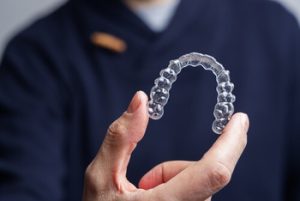Choosing Invisalign means more than just wearing clear aligners – it’s also about knowing what kind of timeline you’re stepping into. If you’ve ever wondered how soon you’ll start to notice changes or how long the full journey might last, you’re not alone. Everyone’s path to a straighter smile is a little different, and that’s exactly what makes this topic worth exploring. Whether you’re dealing with a few gaps or more noticeable alignment concerns, timing can play a big role in your decision-making. But rather than guessing or comparing notes about ‘how long does Invisalign take?’, it’s worth understanding how these timelines are really shaped. Let’s walk through what you might expect, step by step.
Time Expectations Are Different For Everyone
Every person’s smile is unique, which means the time it takes to complete treatment will vary. The alignment of your teeth, the amount of movement required, and the goals of your treatment plan all play a part in determining the timeline. For some people, changes are needed only for a few front teeth, while others may need to correct issues involving the bite or spacing throughout the entire mouth. These differences make it important to avoid assuming a one-size-fits-all answer. Instead, having a personalised conversation with your dentist will help set realistic expectations from the beginning.
The Type Of Movement Affects the Duration
How Daily Habits Influence Progress
The choices made during treatment directly affect how smoothly it goes. Wearing your aligners for the recommended hours each day ensures teeth continue to move as expected. If they are removed for extended periods, even occasionally, the entire schedule can be disrupted. Aligners should stay in for 20 to 22 hours per day to give each tray time to work. Consistent wear is just as important as getting the fit right. Following instructions closely allows your dentist to stick to the original timeline without needing to extend it later.
Aligners Work In Small Steps
Invisalign aligners are made to apply gentle pressure over time, moving teeth gradually across a series of trays. Each new set adjusts the position just slightly, building on the work of the previous one. This gradual approach reduces discomfort and avoids putting too much stress on the teeth. Since every tray needs a set period to be effective, skipping ahead or wearing them for less time won’t speed things up. The system is designed to balance effectiveness with comfort, which is why steady use over time gives the most reliable outcome.
Not All Cases Start At The Same Point
For someone with mild spacing, the timeline could be very short. But for patients with more complex cases, like crowded teeth or overlapping bites, the duration can be much longer. A dentist will assess how much alignment is needed during the initial consultation. From there, your treatment plan is created based on your current position and the desired end result. This individualised approach ensures you receive what your teeth actually need instead of a standard timeframe. Your situation plays a large role in shaping how long the process may take.
Age Can Be A Small Factor
While Invisalign is suitable for both teens and adults, age can sometimes affect how quickly teeth respond. Younger patients tend to see movement slightly faster because their jaw is still growing, allowing adjustments to settle in more easily. Adults can still achieve excellent results, but it may take a bit longer, depending on the case. This doesn’t mean older patients should avoid orthodontic treatment, but it’s helpful to be aware of how biology can influence the pace. Regardless of age, consistency and good oral hygiene habits play a much larger role in treatment success.
How Attachments And Refinements Add Time
Some cases require attachments, which are small tooth-coloured pieces that help aligners apply more pressure to specific areas. While they improve control over movement, they may also extend the treatment length slightly. Refinements may be needed at the end of the planned timeline to fine-tune the results. These additional aligners make sure the final outcome matches your expectations. Although they might add weeks or months to the overall schedule, they help create a more accurate and lasting result. Your dentist will discuss if refinements are expected as part of your invisalign treatment plan.
Monitoring Progress With Check-Ins
Comparing With Other Treatment Options
When compared with other orthodontic treatments, the timeline for Invisalign is often similar or shorter depending on the complexity of the case. Some people are surprised to learn that in mild to moderate cases, aligners may complete the job faster than traditional braces. However, for severe bite issues, traditional braces may still be recommended by your dentist. Unlike traditional metal braces, aligners offer the advantage of being removable and more discreet, which can improve motivation to stick with them. It’s important to weigh the benefits and timeline based on what matters most to you.
Maintaining Momentum With Good Habits
Treatment time can be extended if habits aren’t consistent. Forgetting to wear aligners, skipping appointments, or not changing trays on schedule can all lead to delays. Taking care of your aligners and maintaining good oral hygiene helps the process move forward smoothly. Small actions like brushing after meals before putting the aligners back in can make a difference in how the aligners fit and feel. Following instructions and staying committed helps avoid setbacks. Your role in the process has a strong impact on the final result.
The Importance Of Realistic Timelines
It’s important to understand that even though there’s an average treatment time, it’s just a general guide. Each treatment plan is customised, so someone else’s timeline will not apply to your case. The average invisalign treatment time may range between several months to over a year, depending on all the factors discussed. What matters most is that the pace suits your goals, comfort, and oral health needs. Being patient with the process helps ensure that your outcome is both stable and satisfying.
What To Expect After The Final Tray
Once you’ve completed the last aligner, your dentist may provide a retainer to help maintain your new alignment. Wearing this retainer as instructed is important to prevent shifting and protect the progress you’ve made. Without it, teeth may slowly move back to their original position, which could undo some of the treatment. This final phase is part of keeping long-term results. A well-fitted retainer helps secure your smile for the future and supports everything that the treatment has accomplished.
Want Straighter Teeth Without Delays?
References
https://www.colgate.com/en-in/oral-health/adult-orthodontics/what-do-invisalign-braces-cost-are-they-worth-it-0113
https://pubmed.ncbi.nlm.nih.gov/30264270/



